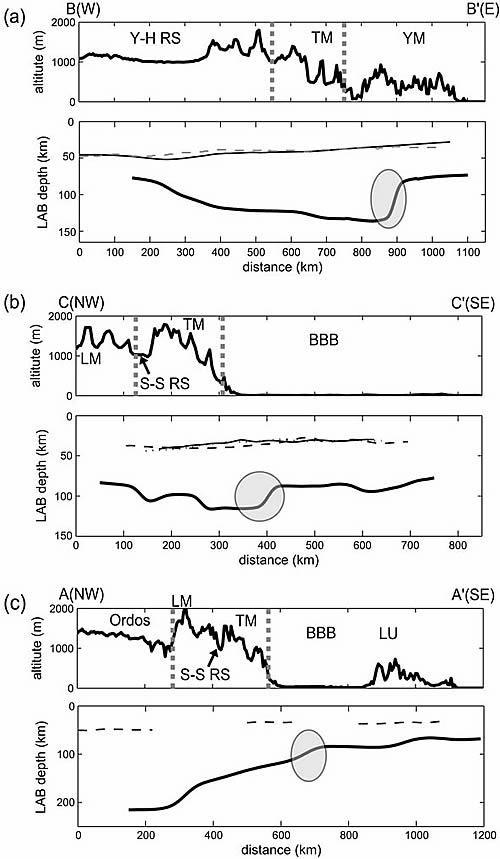Highlight 2009-035Update time:10 23, 2009
Earth and Planetary Science Letters,2009,286:171-183 Seismic evidence for significant lateral variations in lithospheric thickness beneath the central and western North China Craton Ling Chen, a, , Cheng Chenga and Zigen Weia Abstract
We have migrated teleseismic S-receiver functions to construct detailed lithospheric structure images that cover the three constituent parts of the North China Craton (NCC). Our images show that in contrast to the eastern NCC where significantly thinned lithosphere (60–100 km) is widespread, the central and western NCC are characterized by the coexistence of both preserved thick and dramatically thinned lithosphere. The thick lithosphere (> 200 km) is present beneath the stable Ordos Plateau and the thinned lithosphere (up to 80 km) is found in the late Cenozoic Yinchuan–Hetao and Shaanxi–Shanxi rift areas, with sharp changes occurring over a lateral distance of < 200–400 km. Near the boundary between the eastern and central NCC, a rapid thickening of the lithosphere by 20–40 km over ~ 100 km laterally is observed, concordant with abrupt changes in surface topography and roughly coincident with the North–South Gravity Lineament (NSGL). Together with petrological and geochemical data these structural features suggest that lithospheric remobilization and thinning may have affected the NCC much further to the west than previously thought. Compared to the widespread reactivation and destruction of lithospheric mantle in the eastern NCC, lithospheric modification of the central and western NCC may have been less intensive and spatially more localized. Rifting and lithospheric reactivation probably occurred at mechanically weak boundary zones, but the cratonic nucleus of the Ordos block (which forms the western part of NCC) seems to have retained its rigidity, thickness, and stability over long periods of geological time. The long-term survival of such lateral contrasts suggests that the thick lithosphere is compositionally distinct from the convecting upper mantle.
|
Contact
Related Articles
Reference
|
-
SIMSSecondary Ion Mass Spectrometer Laboratory
-
MC-ICPMSMultiple-collector ICPMS Laboratory
-
EM & TEMElectron Microprobe and Transmission Electron Microscope Laboratory
-
SISolid Isotope Laboratory
-
StIStable Isotope Laboratory
-
RMPARock-Mineral Preparation and Analysis
-
AAH40Ar/39Ar & (U-Th)/He Laboratory
-
EMLElectron Microscopy Laboratory
-
USCLUranium Series Chronology Laboratory
-
SASeismic Array Laboratory
-
SEELaboratory of Space Environment Exploration Laboratory
-
PGPaleomagnetism and Geochronology Laboratory
-
BioMNSFrance-China Bio-mineralization and Nano-structure Laboratory

 Print
Print Close
Close
